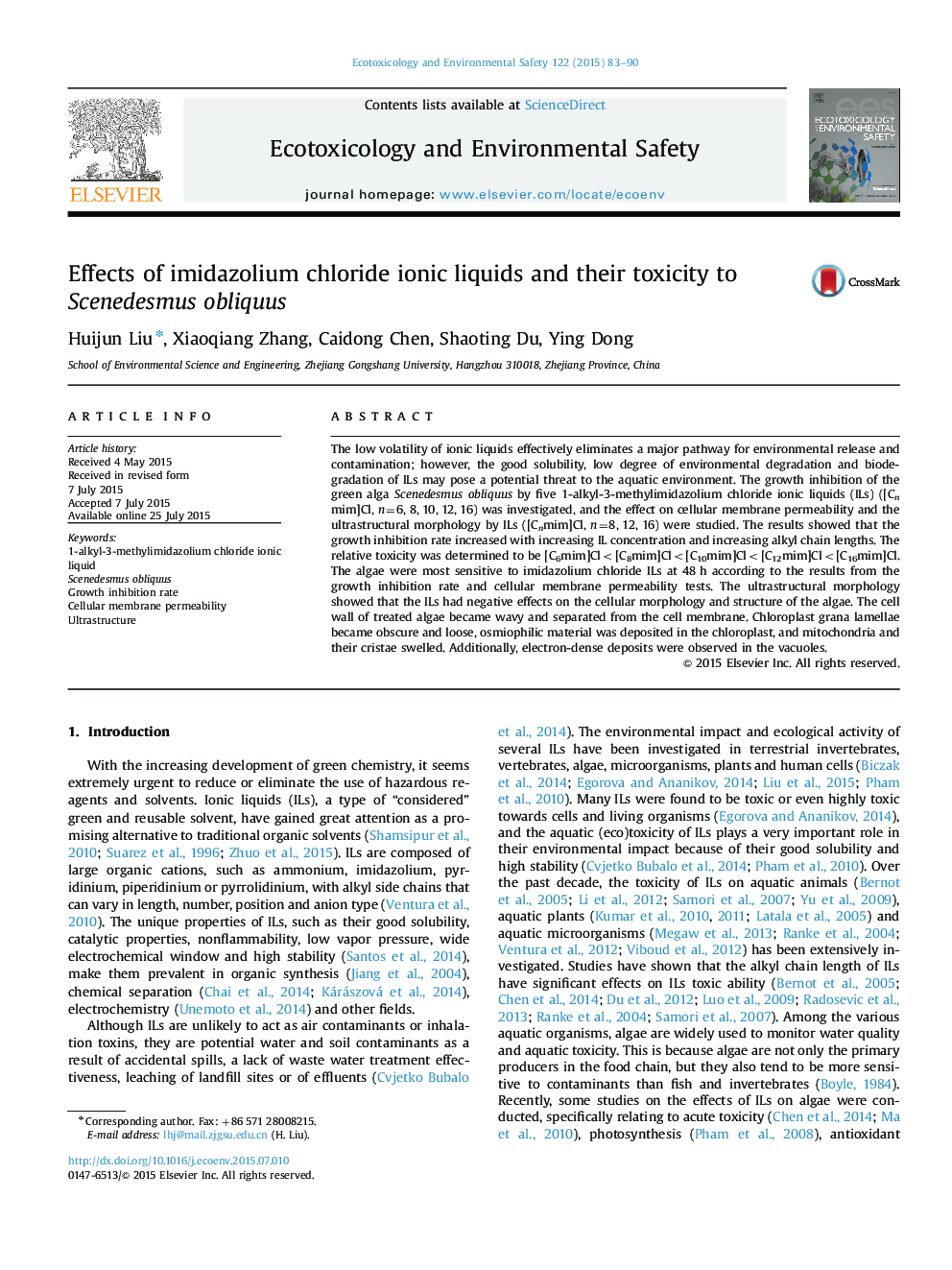| Article ID | Journal | Published Year | Pages | File Type |
|---|---|---|---|---|
| 4419514 | Ecotoxicology and Environmental Safety | 2015 | 8 Pages |
•The toxicity of [Cnmim]Cl ILs on algal growth and cellular membrane permeability increased with concentration.•The algae were most sensitive to imidazolium chloride ILs at 48 h of exposure.•The ILs had negative effects on the cellular morphology and structure of the algae.•The toxicity of ILs increased as the alkyl chain length increased.
The low volatility of ionic liquids effectively eliminates a major pathway for environmental release and contamination; however, the good solubility, low degree of environmental degradation and biodegradation of ILs may pose a potential threat to the aquatic environment. The growth inhibition of the green alga Scenedesmus obliquus by five 1-alkyl-3-methylimidazolium chloride ionic liquids (ILs) ([Cnmim]Cl, n=6, 8, 10, 12, 16) was investigated, and the effect on cellular membrane permeability and the ultrastructural morphology by ILs ([Cnmim]Cl, n=8, 12, 16) were studied. The results showed that the growth inhibition rate increased with increasing IL concentration and increasing alkyl chain lengths. The relative toxicity was determined to be [C6mim]Cl<[C8mim]Cl<[C10mim]Cl<[C12mim]Cl<[C16mim]Cl. The algae were most sensitive to imidazolium chloride ILs at 48 h according to the results from the growth inhibition rate and cellular membrane permeability tests. The ultrastructural morphology showed that the ILs had negative effects on the cellular morphology and structure of the algae. The cell wall of treated algae became wavy and separated from the cell membrane. Chloroplast grana lamellae became obscure and loose, osmiophilic material was deposited in the chloroplast, and mitochondria and their cristae swelled. Additionally, electron-dense deposits were observed in the vacuoles.
